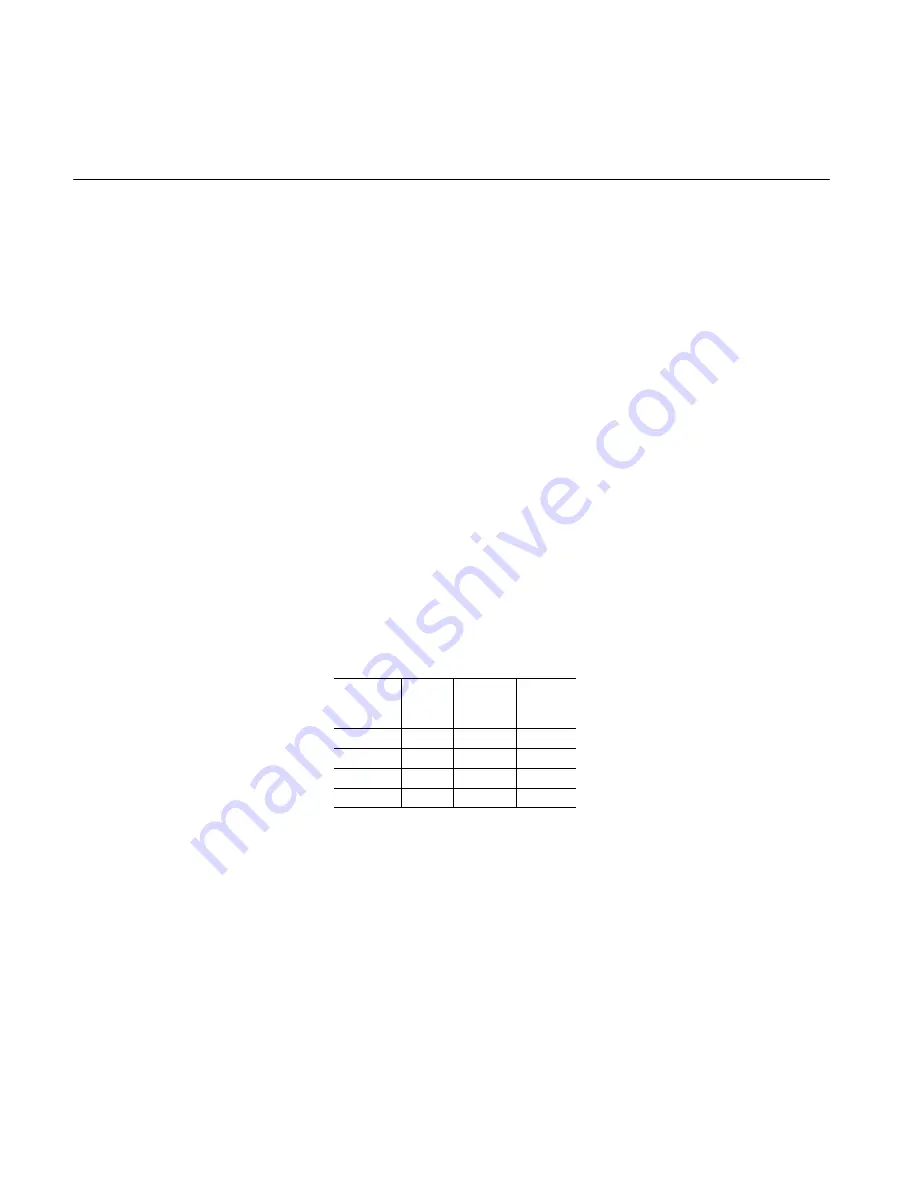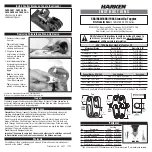
5
Service
The following instructions describe the
complete rebuilding of your Vickers TE,
TF or TL cylinder.
Refer to Figure 4 exploded view.
Warning
Before breaking a circuit connection,
make certain that power is off and
system pressure has been released.
Lower all vertical cylinders, discharge
accumulators, and block any load
whose movement could generate
pressure. Plug all removed units and
cap all lines to prevent the entry of dirt
into the system.
Required Tools
Spanner wrench
Adjustable wrench
Soft brass tool
Thin tool (like a metal ruler)
Copper padded vice
Rubber mallet
Torque wrench
Replacing Rod Seals
1. Once the cylinder is removed from
service, fully retract the piston rod
and remove all port connections.
Drain any hydraulic fluid by manually
cycling the cylinder. Large cylinders
can be carefully cycled with air
pressure.
2. The Quick Change rod cartridge
allows rod seal replacement without
disturbing the tie rods. Remove any
burrs from the wrench flat area of the
piston rod. Place the cylinder in a vice,
rod end up if possible. Remove the
rod bearing retainer plate by removing
the retainer screws. The retainer may
be round, square or rectangular.
Round retainers that are recessed into
the head have a pry groove on the
O.D. or two tapped holes to aid
removal.
3. Remove the rod seals on smaller
cylinders by placing your thumb over
the rod end port and giving a quick
pull on the piston rod. Use low
pressure air in the rod end port for
larger cylinders. Leave the bearing
on the rod to catch the seals as they
leave the seal cavity. Note the
position of the male seal adaptor
relative to the bearing and the seals.
Leave the male seal adapter in place
if in the bottom of the seal cavity, to
support the piston rod while
performing the remaining
disassembly.
4. Remove the elastomer rod wiper or
rod scraper retainer from the rod
bearing. Remove the rod scrapers if
applicable.
5. For metallic scrapers, stack the new
scraper rings so that the slots are
staggered. Lightly lubricate the new
wiper or retainer and push it into the
bearing groove with a soft brass tool.
6. Lightly lubricate the new rod seals
and replace, one at a time, by
leading the outside sealing edge with
a soft brass tool as each seal is
inserted in the cavity. Be careful not
to damage the seals when placing
them over the piston rod.
7. Carefully replace the bearing on the
rod. Slide the retainer plate into
position. Replace the retainer
screws, and tighten in a cross
sequence pattern. Torque to values
shown in Table 2 below.
Retainer Screw Torque
Retainer
Screw
Size
Screw
Part #
6893
Screw
Part #
6894
Rec.
Torque
(ft-lbs)
1
/
4
- 28
-1 -2
-1 -2 -3
7
1
/
4
- 28
-1, -2
-1, -2, -3
7
5
/
16
- 24
-3 -4
-4 -5
12
5
/
16
- 24
-3, -4
-4, -5
12
3
/
8
- 24
-5
-6 -7
22
3
/
8
- 24
-5
-6, -7
22
1
/
2
- 20
-6, -7
-8, -9
50
Table 2.
Complete Rebuild
1. Repeat steps 1, 2, 3, 4 and 5 in
Replacing rod seals section.
2. Remove the tie rod nuts, loosening
in a cross sequence pattern.
Carefully remove the cap or head
from the tie rods and inspect for
damage or signs of contamination.
3. Remove the cylinder body from the
head/cap. Slide the piston rod
assembly out of the cylinder body. It
is not necessary to remove the tie
rods if threaded into a tapped head
or cap for servicing, unless the
tapped head or cap is mechanically
damaged.
4. The piston does not have to be
removed from the rod for normal
piston seal replacement. Cast iron
piston rings may be removed by
inserting a thin tool under the joint
and running it around the
circumference of the piston.
5. Remove the nonmetallic wear band
which simply snaps into the groove
on the piston’s outer diameter, if
applicable.
6. If piston removal from the rod is
required, slide the piston rod
assembly out of the cylinder body.
Clamp the rod securely in a copper
padded vice that will protect the rod
finish. If a locknut holds the piston to
the rod, loosen and remove locknut.
7. If no locknut is present, heat the
piston to approximately 350
_
F with a
torch or in an oven to break the
anaerobic adhesive. Insert a
spanner wrench in the drilled holes
on the piston face and break the seal
by rapping the wrench with a rubber
mallet, rotating the piston in a
counterclockwise direction.
CAUTION
THE PISTON IS HOT!
8. Unscrew the piston and set it aside.
9. Remove the cushion collar from the
rod, if the cylinder is cushioned on
the head end. Let the rod cool before
re-assembly.
10. Snugly secure the rod into the vice.
Replace the cushion collar on the
rod (if required). Thoroughly clean all
metallic surfaces with a
non-petroleum based cleaner and a
wire brush, if necessary.
11. Apply anaerobic adhesive near the
rod shoulder (or collar) on the rod
threads and on the piston I.D.
threads.
NOTE
Be sure to follow the adhesive
manufacturer’s
recommendations regarding
surface preparation, priming
requirements, proper adhesive
for the thread size, and cure time
prior to pressurization. Failure to
do so could result in improper
sealing and retention.








































